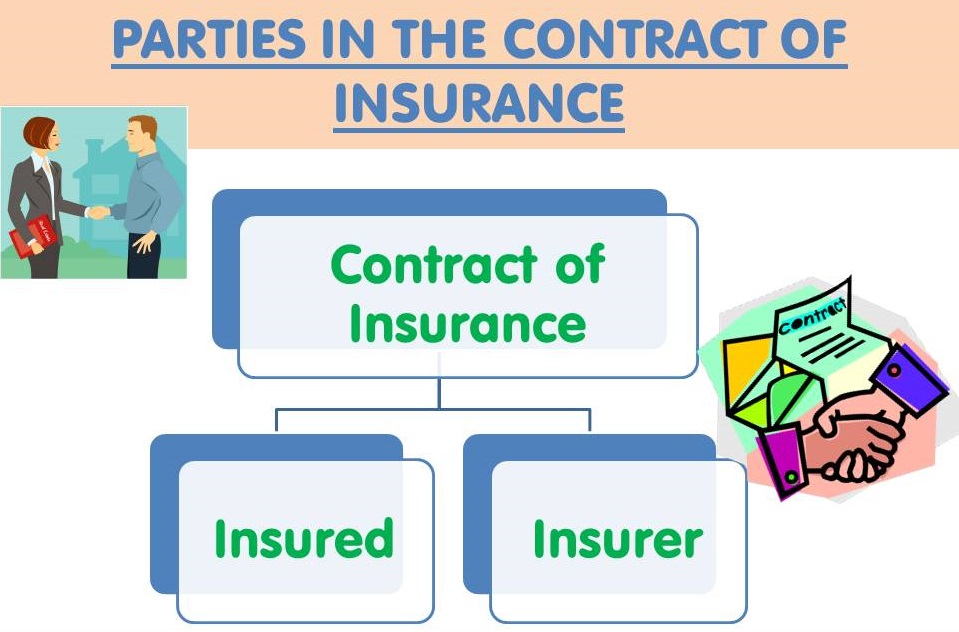- Home
- Business Processes
- Industry Knowledge
- Aerospace Industry
- Automotive Industry
- Banking Domain
- BFSI Industry
- Consumer/ FMCG Industry
- Chemicals Industry
- Engineering & Construction
- Energy Industry
- Education Domain
- Finance Domain
- Hospitality Domain
- Healthcare Industry
- Insurance Domain
- Retail Industry
- Travel and Tourism Domain
- Telecom Industry
- Leadership Skills
- eLearning
- Home
- Domain Knowledge
- Insurance Domain
- Parties in the Contract of Insurance
Parties in the Contract of Insurance
There are two parties in the contract of Insurance. Understand these parties and their definition in the contract of insurance. Learners will learn about the key stakeholders in the insurance business along with a classification of internal and external stakeholders.
There are two parties in the contract of Insurance:
1. The Insured:
The first party in the contract of insurance is the INSURED: Insured is a person who is looking to hedge his future risk of unforeseen losses or events. There are different types and costs of insurance policies available nowadays. The choice of the policy type depends on the insured as to what type of risk he wants a cover for.
The insured is the person in whose favor, the contract is operative and who is indemnified against or is to receive a certain sum upon the happening of a specified contingency or event. He is the person whose loss is the occasion for the payment of the insurance proceeds by the insurer.
2. The Insurer:
Second-party is the INSURER: The insurer or the insurance company agrees to pay for the future financial losses of the insured against a regular payment of premium. The insurance company assumes or accepts the risk of loss and undertakes for a consideration to indemnify the insured or to pay him a certain sum on the happening of
The second party in the contract of Insurance a specified contingency or event.
The business of insurance may be carried on by individuals just as much as by corporations and associations. The state itself may go into the insurance business.
To whom the proceeds/Claims are paid?
Is it always the case that the proceeds or the claim is paid to the Insured? Not always; the person paid may be the beneficiary designated in the policy. A common example of this situation is a life insurance policy where the proceeds are not given to the insured but to a third party designated by the insured.

Key Stakeholders in Insurance Business:
Any person or entity interested in a particular business is called a stakeholder. They are affected by business activity, and they may be part of the core decision-making team. Many people contribute to the running of an insurance company. Aside from shareholders, the key stakeholders in the insurance value chain are:
- Consumers who buy insurance products are the main constituents of the list of stakeholders for the Insurance Industry. They may be the insured or beneficiaries or persons with insurable interest.
- Investors that support insurance companies by purchasing insurance company stock as they believe in the industry model and invest their money in the insurance company stock.
- Insurance carriers that provide insurance coverage through policies and accept the risks covered by the policies. These are generally large insurance companies, including direct insurers and reinsurers.
- Partners who couple with insurance companies to share profits and losses. Partners include reinsurers, institutional investors, and trade partners. Partners also include the insurance agencies and brokerages that distribute insurance products.
- Outside networks that include those that perform professional services for insurers. They include appraisers, insurance bureaus, reinsurers, claims adjusters, and firms providing consulting, claims processing, and data collection services.
- Regulators and auditors that help secure the financial health of the insurance industry. Regulators implement and enforce regulations, while auditors ensure adherence to finance and accounting standards.
- Vendors that supply the goods insurers require performing business activities. Examples include software distributors and administrative goods, suppliers.
Internal Stakeholders:
Internal stakeholders are owners, managers, and workers. External stakeholders are the customers and suppliers. The community in which the organization does business also is a stakeholder. All the stakeholders are not equal, and different stakeholders will have varying considerations. These stakeholders can have a direct or indirect stake in the organization and in policy-making. Given below is a non-exhaustive list of internal stakeholders in the insurance industry:
- Insurer Executives
- Product Managers
- Underwriters
- Actuaries
- Distribution Staff
- Claims Assessors
- Claims Managers
- Advisers
- Funds, Master Trusts & Corporates
- Banks & Financial Intermediaries
- Group Fund Members
- Bank Customers
- Alliance Partners
- Third-Party Administrators (TPA’s)
- Service Providers
- Reinsurer
External Stakeholders:
External stakeholders are people who are not directly working within the business but are affected in some way from the decisions of the business. The range of external stakeholders for the insurance sector is extremely broad, and includes:
- Trade associations
- Professional bodies
- Analysts and Rating agencies
- International regulators and International bodies
- The political community
- Media
Related Links
You May Also Like
-
Insurance policies are a safeguard against the uncertainties of life. Insurance policy helps in not only mitigating risks but also provides a financial cushion against adverse financial burdens suffered. From a macro perspective Insurance industry turns capital accumulates as premiums into productive investments thereby promoting trade and commerce activities which result in the sustainable economic growth of the economy.
-
BFSI is an acronym for Banking, Financial Services, and Insurance and popular as an industry term for companies that provide a range of such products/services and is commonly used by IT/ITES/BPO companies and technical/professional services firms that manage data processing, application testing, and software development activities in this domain. Banking may include core banking, retail, private, corporate, investment, cards, and the like. Financial Services may include stock-broking, payment gateways, mutual funds, etc. The insurance covers both life and non-life.
-
Parties in the Contract of Insurance
There are two parties in the contract of Insurance. Understand these parties and their definition in the contract of insurance. Learners will learn about the key stakeholders in the insurance business along with a classification of internal and external stakeholders.
-
This article helps the student to understand the legal principles and provisions of the insurance law. Starting with the fundamentals from which law is derived, this article helps the student to understand the salient aspects of any insurance contract, the rights and obligations of parties to the contract, and the legal environment within which insurance practice is carried out. Explore the seven most important principles of insurance.
-
The Business Model of Insurance Industry
The insurance industry business model can be further categorized into two types of main activities, service domain, and support domain. Service domain activities make up the company's value chain and the support domain provides the infrastructure and support to sustain the value chain. Support activities may include corporate services, finance, human resources, or information systems, and technology.
-
What is General Insurance Industry?
General Insurance industry providers perform an essential function in today's economy. General insurance is typically defined as any insurance that is not determined to be life insurance. Depending on the type of occupation, risk exposure, and the money involved, the insurance could be different for each industry or business. In underwriting insurance policies, general insurers earn premiums that they further invest.
-
What is Finance? Meaning, Definition & Features of Finance
Finance is the science around the management of money. Finance encompasses banking, credit, investments, assets, and liabilities. The finance function encompasses a variety of functions, activities, and processes. Finance also consists of financial systems. Acquisition, allocation, utilization, and channelizing the funds to maximize the shareholder's wealth. Finance includes public, personal, and corporate finance.
-
The insurance industry comprises companies and people who develop insurance policies and sell, administrate, and regulate them. Insurance is a means of protection from financial loss. It is a form of risk management primarily used to hedge against the risk of a contingent, uncertain loss. The insurance Industry manages the risk to people and businesses from the dangers of their current circumstances. Insurance policies are a safeguard against the uncertainties of life.
-
Insurance is categorized based on risk, type, and hazards. Logically, any risk that can be quantified can potentially be insured. Understand the importance of insurance and the different types of insurances like Life Insurance or Personal Insurance, Property Insurance, Marine Insurance, Fire Insurance, Liability Insurance, Guarantee Insurance.
-
The insurance industry classifies the different products it offers by sector. The insurance sector is made up of companies that offer risk management in the form of insurance contracts. There are four main insurance sectors: Life & Health Insurance Industry, General Insurance Industry, Specialty Insurance Industry & Reinsurance Industry. This article describes the current insurance industry sectors and their associated activities, products, and services.
Explore Our Free Training Articles or
Sign Up to Start With Our eLearning Courses

About Us
Learning
© 2023 TechnoFunc, All Rights Reserved










